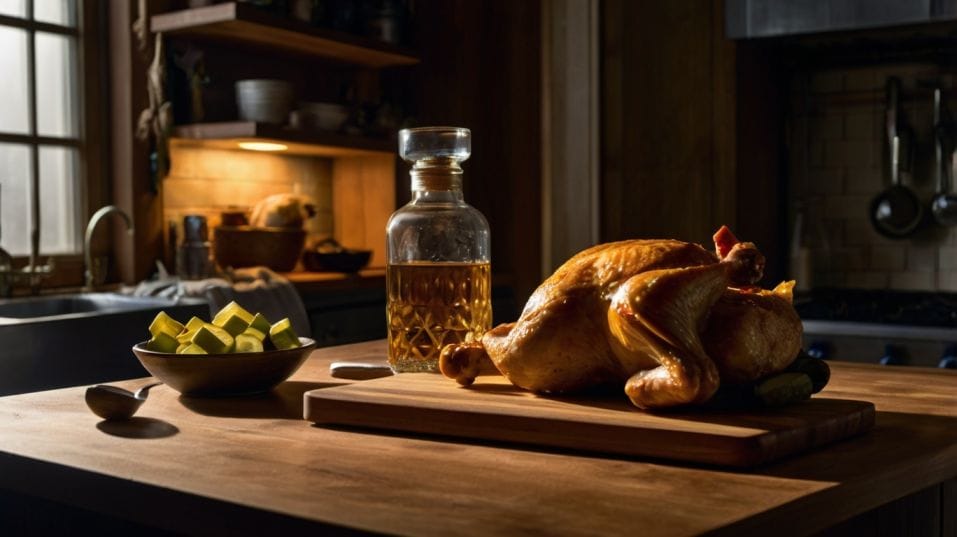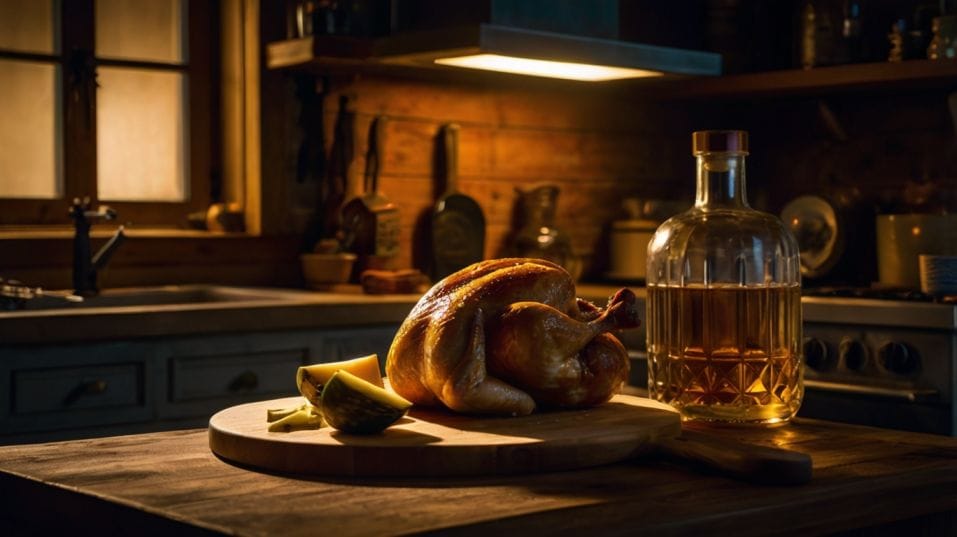3 Quick Food Pairings Using What’s in Your Fridge
Learn how to pair whiskey with everyday food from your fridge. These smart, simple combos train your palate and boost your tasting confidence.

What if the key to unlocking your whiskey’s full flavor was already in your fridge? If you're just getting serious about whiskey—tasting with purpose, noticing texture, chasing nuance—then pairing it with the right food isn’t optional.
It’s how you train your palate. The good news? You don’t need a cheese board or specialty shop. Just everyday staples that push flavor forward, sharpen contrast, and help you understand what’s really in your glass.
Sharp Cheddar + High-Rye Bourbon
High-rye bourbons hit hard. They’re built for structure—spice, bite, backbone. That rye content pushes through sweetness and forces your palate to work.
When you match that with sharp cheddar, you’re not just creating contrast—you’re creating control.
Why this works
Cheddar is dense with umami. The salt brings out bourbon’s natural sugars—caramel, vanilla, brown sugar—while the fat rounds off the ethanol. Rye’s peppery edge cuts through the richness, giving your taste buds something to grip.
Suddenly, you’re not just sipping—you’re tracking. You’re feeling how spice moves across your tongue, how sweetness lingers or vanishes. You’re learning where balance lives.
Even a supermarket cheddar can do the job. In fact, sometimes the milder versions let the whiskey take the lead.
Aged cheddars (1-2 years) push back harder and make you work to find the bourbon’s finer points. Either way, you’re getting a real-time tutorial in how contrast highlights nuance.

What it teaches you
- Balance is active. Too much fat? The whiskey disappears. Too much heat? The cheese dulls. You’ll start to recognize that sweet spot.
- Salt pulls sweetness forward. That’s a principle you’ll use again and again as you try bolder, more complex pours.
- Fat neutralizes burn. You’ll begin to isolate alcohol heat from flavor heat—critical for appreciating higher-proof bottles.
Try it with a few different bourbons. You’ll start to notice how some rise to the occasion and others fall flat. That’s how your palate evolves—from repetition and pattern recognition, not theory.
Cold Roast Chicken + Peated Scotch
If there’s leftover roast chicken in your fridge—skin on, cold, plain—that’s your gateway to understanding peat.
Peated Scotch can feel like a wall: thick, smoky, borderline medicinal. Pair it wrong, and it’s all you taste. Pair it right, and suddenly you’re decoding complexity you didn’t know was there.
Why this works
Cold chicken doesn’t bring heat or spice. That’s the point. It’s neutral enough to expose the whisky’s edges, but still carries fat and salt to support the flavors.
The skin (if you have it) amplifies that effect, giving the peat something to bond with. That bonfire note? Now it’s wrapped in umami. The phenols you couldn’t name?
They start breaking down into specific flavors—charcoal, brine, seaweed, even smoked herbs or cured meat. It’s like someone turned the resolution dial up on your palate.
What it teaches you
- Peat isn’t one note. With the right pairing, you’ll start hearing chords instead of a single drone.
- Texture matters. Dry protein with a fatty spirit brings everything into sharper relief.
- You can train your brain to stop flinching. That initial smoke-shock goes away faster when it’s buffered by food.
You’ll start noticing which kinds of peat you like—earthy, salty, floral, rubbery—and which you don’t. That’s a game-changer when you’re deciding what bottles to seek out, collect, or skip.
Pickles + American Single Malt
American single malts are still defining themselves. Most are lightly oaked, malt-forward, and often carry faint notes of toast, orchard fruit, honey, and soft spice. That subtlety is what makes them interesting—but also easy to miss. Enter: pickles.
Why this works
Pickles—whether sour, sweet, garlicky, or spicy—bring three things whiskey desperately needs: acid, salt, and crunch. That trio resets your palate.
The vinegar cuts fat, the salt sharpens contrast, and the crunch triggers physical awareness. Take a bite, then sip your single malt. That malt sweetness? Way more vivid now. The oak finish? Longer and cleaner. The spice? Easier to place.
It’s not about the pickle itself. It’s about calibrating your perception. You’re using acidity to scrape the slate clean and let the whiskey speak clearly.
What it teaches you
- Acid is your ally. Use it when things get muddy. Even with premium pours.
- Light whiskeys need space. Big flavors drown them—acid gives them room to breathe.
- Mouthfeel is part of the story. A crisp pickle followed by a silky malt reveals contrast in texture, not just flavor.
Don’t overthink the style. Dill spears, spicy chips, bread-and-butter slices—they all work. Taste first, then experiment. You’ll learn what kinds of pickled flavors accentuate different malt profiles. It’s low-stakes, high-reward exploration.
Final Thoughts
This isn’t about impressing guests or hosting a “perfect” pairing night. It’s about using everyday food to build real tasting skills.
The cheddar shows you how sweetness and spice react to salt and fat. The chicken teaches you how smoke behaves when it’s grounded in texture. The pickles strip everything down so you can hear the quietest notes.
And that’s what you want as you get deeper into whiskey—not just bigger bottles, but a sharper sense of what you’re tasting. A collector with a trained palate beats a collector with a shelf full of unopened unicorns every time.
So open the fridge. Bite, sip, learn. Don’t wait for the “right” moment. You already have the ingredients to taste smarter, collect better, and enjoy whiskey with more clarity.
Try something tonight. Taste with intent. Build your instincts one pairing at a time.




